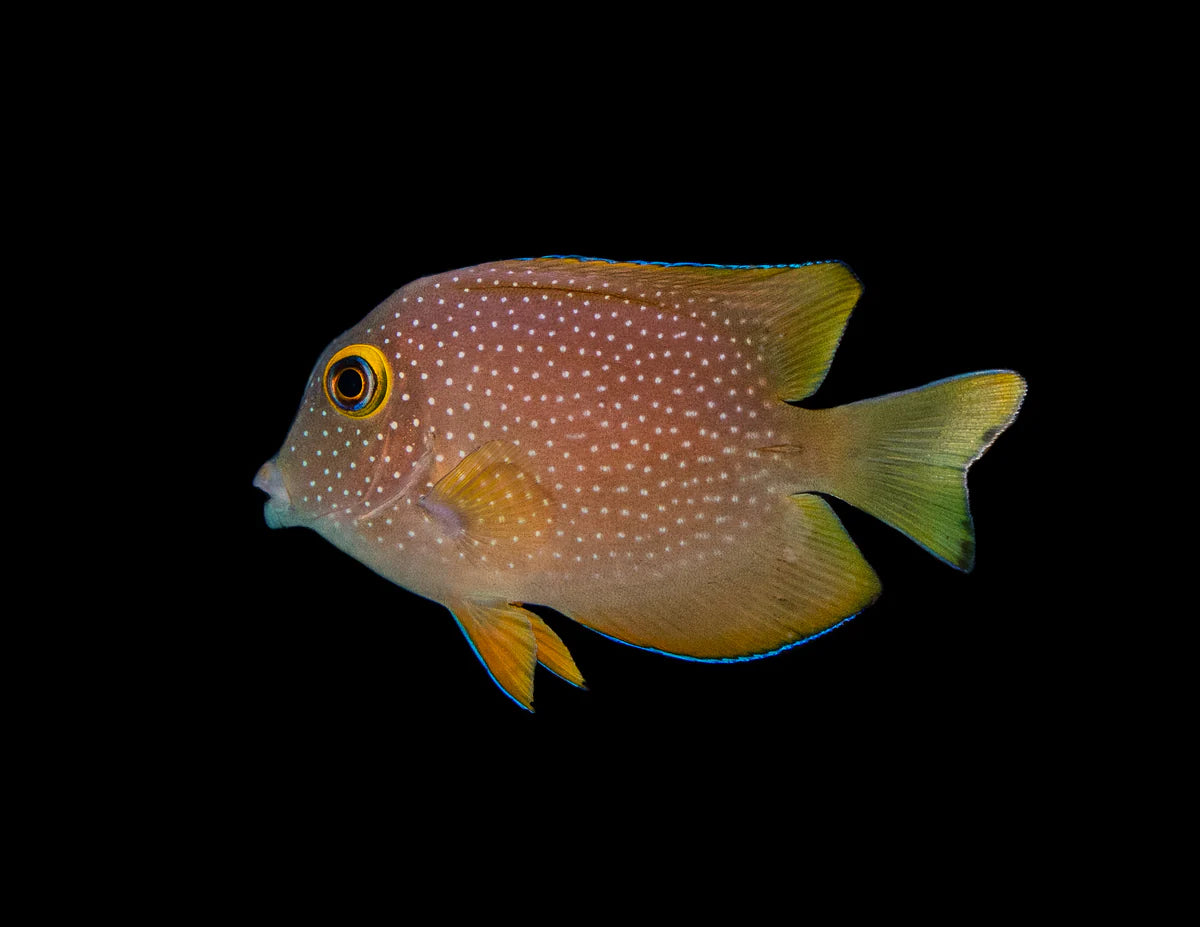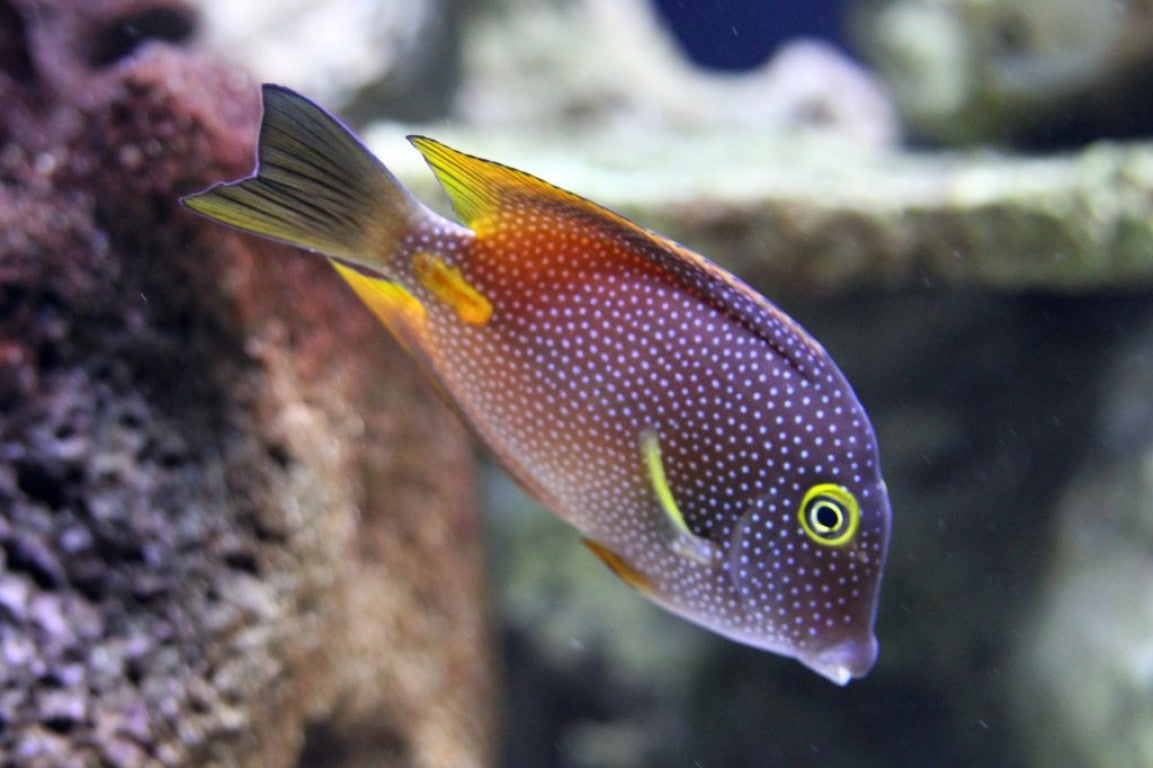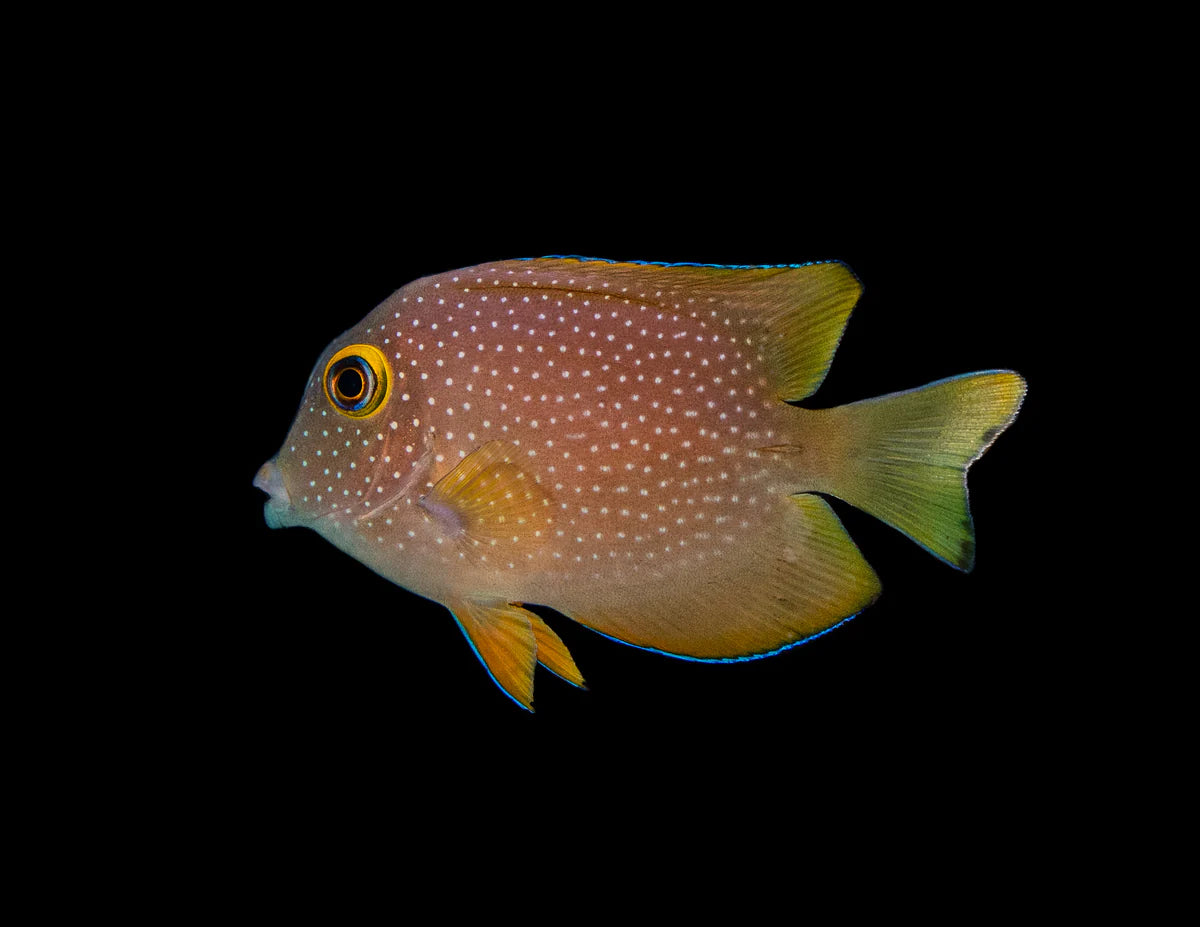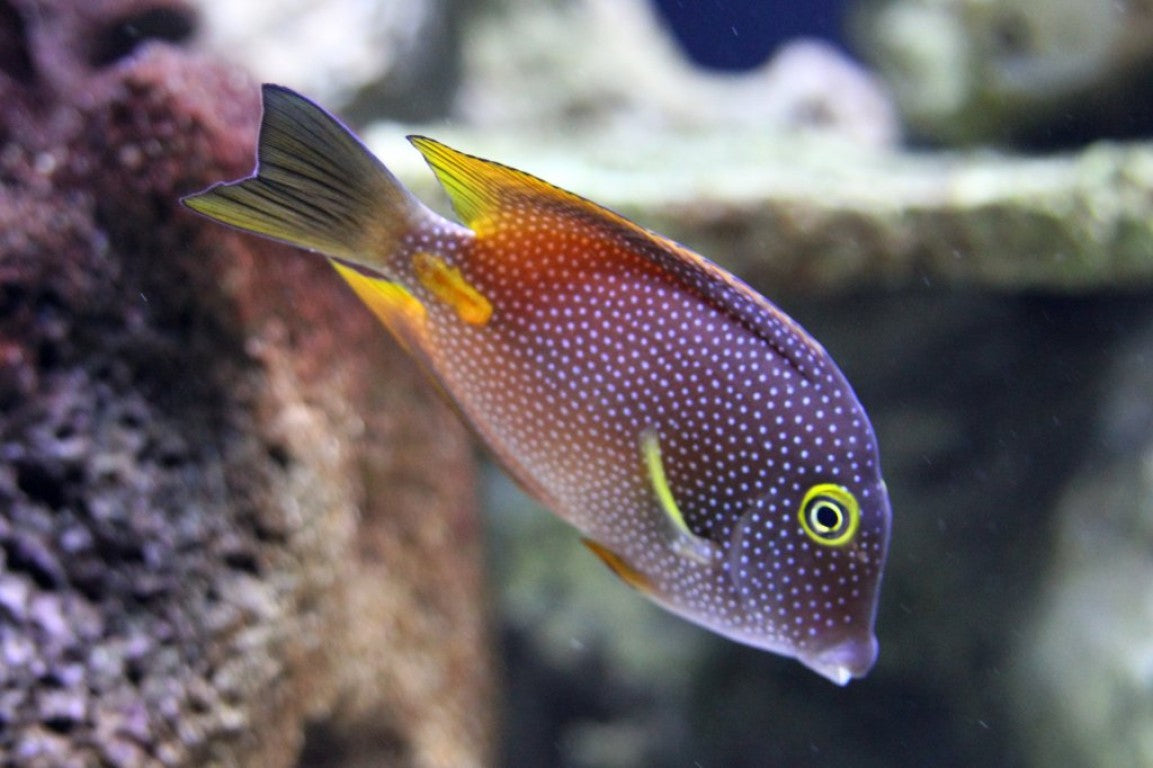Tang Bristletooth Squaretail "Rare"
Tang Bristletooth Squaretail "Rare"
The Gold Ring Bristletooth Tangs stands out for several reasons. The name acknowledges the bright yellow ring around its eye. As juveniles, they are yellow or orange, but this darkens as they mature. The juveniles' bright body colour blends into yellow fins. Towards its head and chest, it loses vibrancy, becoming a tan colour. Distinctive white dots cover the body and face, and a blue trim runs along the edge of its dorsal and anal fins. As adults, they keep the yellow eye-ring, but the body and fins are much darker with light blue dots.
The Ctenochaetus genus is commonly named "Bristletooth" due to their bristle-like teeth. They use these to sift and scrape for algae and detritus on rocks, substrate, and tank walls. Like other Tangs, the Gold Ring Bristletooth has caudal spines on both sides at the base of the tail. They are quite small but can still give a nasty cut so handle them with care. This is one of the smaller species of Tang with adults reaching a length of 6.3 inches (16 centimetres).
Although females grow more quickly than males, males will reach a larger size as adults. Males often exhibit a change in colour for the courtship process. Gold Ring Bristletooth Tangs mate in pairs and are pelagic spawners. When they are about to spawn they move to the surface to release their gametes.
This species is commonly found across the Indian Ocean to the Andaman Sea and Indo Pacific. Locations include East Africa, Sri Lanka, Indonesia, and Australia. They usually inhabit reef areas to a depth of about 21 metres.
Tank Recommendations for Gold Ring Bristletooth Tangs
Make sure your tank is at least 70 gallons (265 litres).
Gold Ring Bristletooth Tangs are reef safe and can also inhabit a fish only tank. They need crevices and caves to hide in at night. A large space for swimming is also essential.
A suitable tank needs to be mature with plenty of live rock to collect detritus and allow algae growth. Lighting should be enough to encourage algae growth. A sand substrate is the most suitable option as it can be sifted easily for detritus. Water movement should be strong.
Suitable Tank Buddies
The Gold Ring Bristletooth is one of the most docile species of Tang. They can cohabit with peaceful fish but will show aggression to other Tangs. A mated pair can co-habit if there is enough space and algae in the tank for both. Larger more aggressive tank mates may be too stressful for it.
Share




